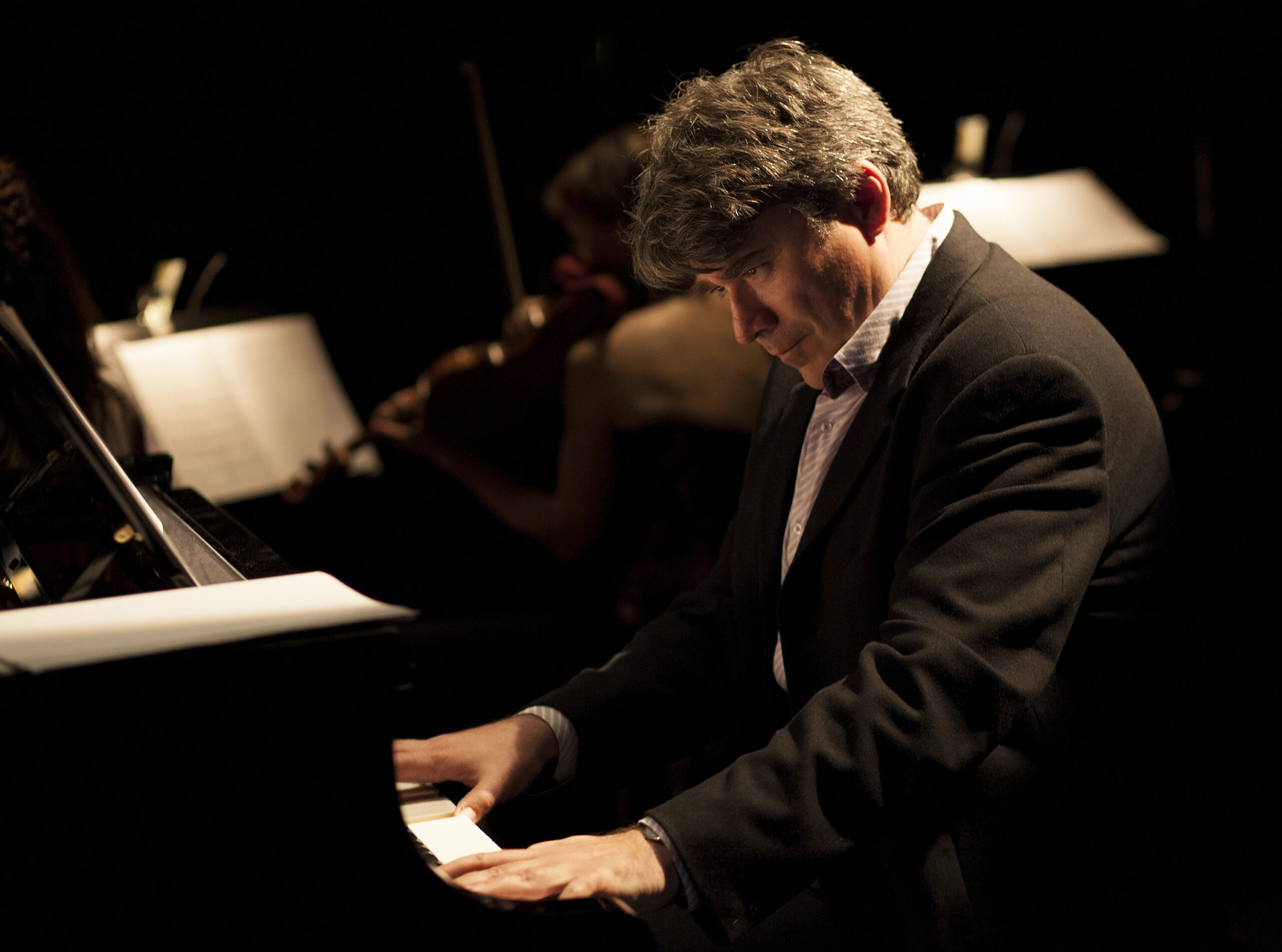In Celebration: Art of Time Ensemble turns 20
Art of Time Ensemble—a Toronto-based company that aims to change the way audiences experience classical music—is wrapping up its 20th anniversary season. In recognition of this anniversary, the last concert of the company’s season will include a concert “highlight reels” of Art of Time’s best work in dance, music, theatre, and poetry.
Beginning in 1998 with a small group of musicians collaborating with well-known performers, Art of Time Ensemble came from humble beginnings, performing one-off concerts for small audiences. As the years passed, it was clear the company had tapped into something audiences wanted, and slowly the small group of performers grew. Two decades later, Art of Time Ensemble boasts the best Canadian artists—spanning across the genres of the performing arts, film, literature, and of course, music—and performs an annual subscription season at Toronto’s Harbourfront Centre Theatre, appears regularly at Koerner Hall, and tours Canada and the United States.
Art of Time Ensemble transforms the way audiences experience music by fusing high art and popular culture through juxtaposing the best in each genre.

Art of Time Ensemble. Martha Burns. Photo credit: John Lauener.
Take, for example, actor Martha Burns performing what appears to be a staged reading of Erwin Schulhoff’s “Sonata Erotica,” a female voice solo from 1919 featuring a soprano expressing a carefully practiced orgasm. It’s weird, surprising, hilarious, and deeply entertaining. Then there is the strange but gripping concoction of Margaret Atwood doing a poetry reading of Thriller Suite alongside original live music by Dan Parr. Suffice it to say, Art of Time consistently shows audiences what it is possible to create in this place, at this time, if we would only choose to focus on what is great, and not on grouping things based on antiquated ideas of form or adhering to the unnecessary divisions of low and high art.
Art of Time has been led by Artistic Director Andrew Burashko since its formation. Burashko made his debut at the young age of 17 with the Toronto Symphony Orchestra. He is a soloist, chamber musician, collaborator, and teacher. His body of work demonstrates a strong desire to reach across borders separating artistic genres and giving audiences something new yet rooted in classical music.
As Burashko busily prepares for the last show of the season, he carved out a little time to talk to us about Art of Time Ensemble and the upcoming concert.
You formed Art of Time Ensemble 20 years ago. What was your vision for the ensemble in 1998? In what ways has that vision evolved over the past two decades?
I formed Art of Time with the desire to turn people on to classical music by creating concerts that made thematic connections between classical and other styles of music and other media such as theatre dance, spoken word and film. That vision has evolved to also step outside of classical music every now and then—to produce projects that sometimes focus directly on theatre, dance and popular music.
You’ve created a “highlights reel” for the closing concert, Best of Words and Music. What do you believe makes a work qualify as being the best?
Many factors. Ultimately, how well it resonates with the audience.

Art of Time Ensemble. Rick Roberts. Photo credit: John Lauener.
What part of this last concert is closest to your heart and why?
It’s a very hard question to answer. They all resonate very strongly. If I had to choose I would probably say the pieces by Erich Korngold coupled with excerpts from Shakespeare’s Much Ado About Nothing. The music that was written as incidental music for the play is absolutely gorgeous and those excerpts read by Paul Gross and Martha Burns—it’s Shakespeare at his funniest and most charming. That’s saying quite a lot, I think.
For those who may not have ever had the opportunity to experience an Art of Time Ensemble production, could you please explain what they should expect of the experience if they were to attend?
They should expect to be surprised—to see something for the first time—to see something in a completely new light.
Is there anything you would like to add?
I’m thrilled to be sharing the stage with such great artists: Kristen Thomson, Rick Roberts, Martha Burns, Paul Gross, Isabel Bayrakdarian, Richard Greenblatt, Mike Ross and so many others.

Art of Time Ensemble. Richard Greenblatt. Photo credit: John Lauener.




Comments